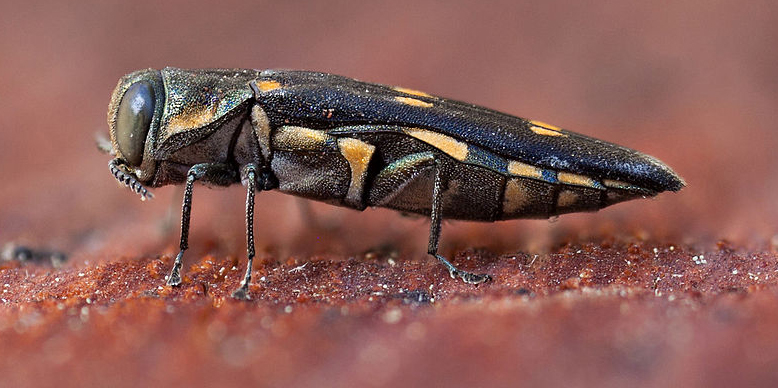You won’t see it if you’re not looking for it, but you’ll know it was there. No bigger than a baby’s fingernail, the gold-spotted oak borer (GSOB) can devastate a 300-year-old oak tree that has withstood storms and quakes and even the quick and astounding rise of urban pollution in the 20th century. But if individual trees were all that was at stake, the oak borer wouldn’t pose such a threat. The truth is, this invasive pest could wipe out every native oak in California.
“As of 2010, GSOB has killed an estimated 21,500 trees covering 1,893 square miles in San Diego County in forests, parks, and residential landscapes,” reports the University of California Cooperative Extension. Generations of the beetle’s larvae hatch and feed under the bark of trees, depleting the tree’s nutrients and damaging its water-conducting tissues. Once GSOB infestation occurs, there’s no guaranteed treatment or tool to combat it.
California native, friend to TreePeople, and oak tree lover René Russo recently became involved in the effort to stop the damage linked to GSOB in Southern California since 2008. In New Oak Threats, a film from University of California Agriculture and Natural Resources (UNARC), Russo talks with certified arborist and conservation biologist Rosi Dagit and many others about GSOB and other pests threatening as many as 200 species of trees in our state, including native sycamores. Containment and removal, Dagit explains, are our best hope. But, she warns, the firewood generated from these diseased trees must not be transported anywhere else.
What can you do to prevent the spread of oak tree mortality?
- Educate yourself by watching UNARC’s video, New Oak Threats
- Report symptoms when you see them: Fill out UC Cooperative Extension’s online form
- Familiarize yourself with invasive pests and tell the County of Los Angeles Entomology and Plant Pathology Laboratories when you see one
- Burn firewood only where you find it. Carrying it to as distant campground increases the risk that borers and other pests will travel with you to uninfested areas, wreaking havoc when they get there. Visit the Web site DontMoveFirewood.org.
- Become a Citizen Arborist with TreePeople and we’ll teach you to ID and prevent tree pests before they strike
Photo: Mike Lewis

